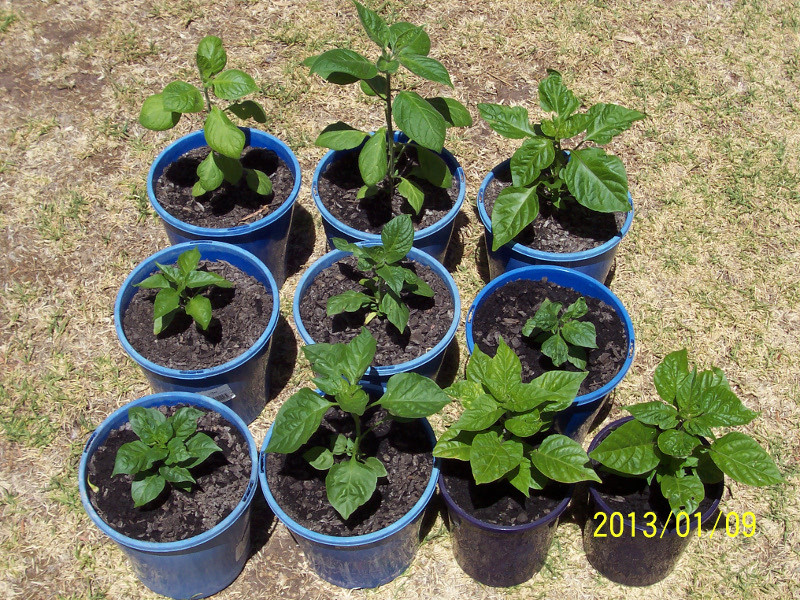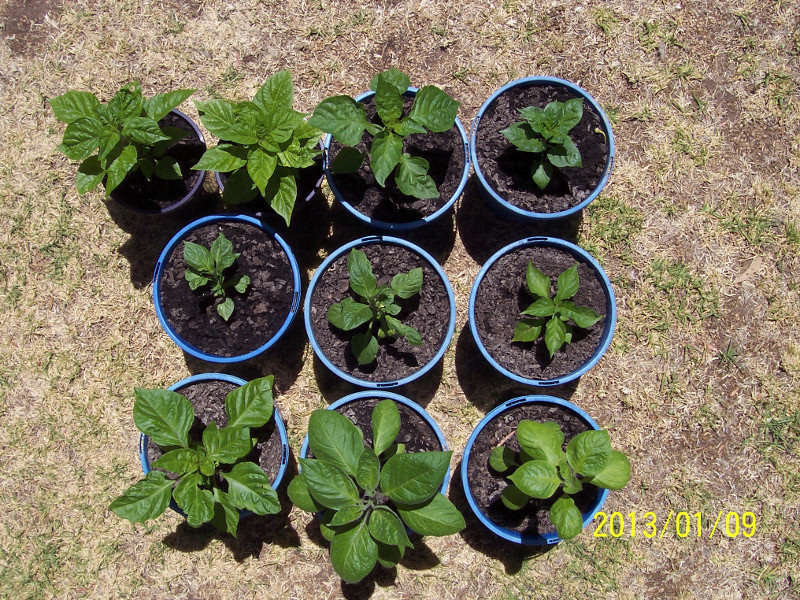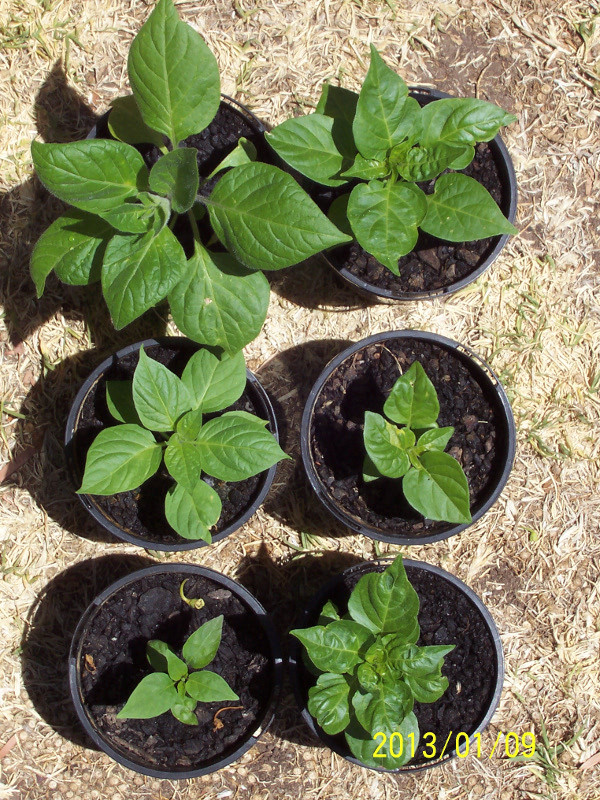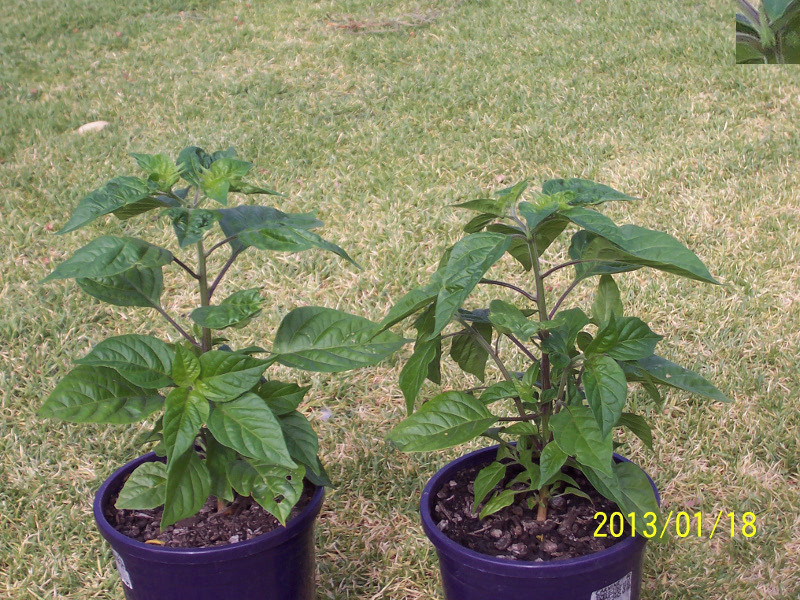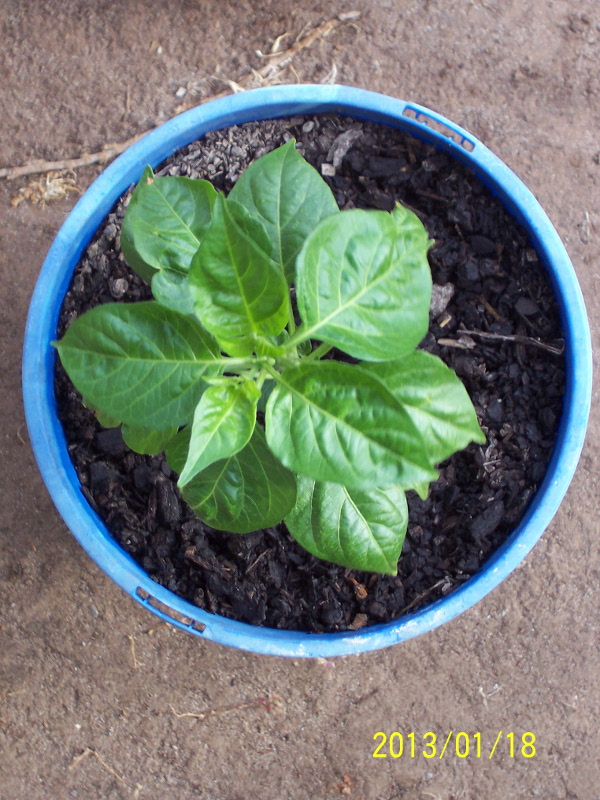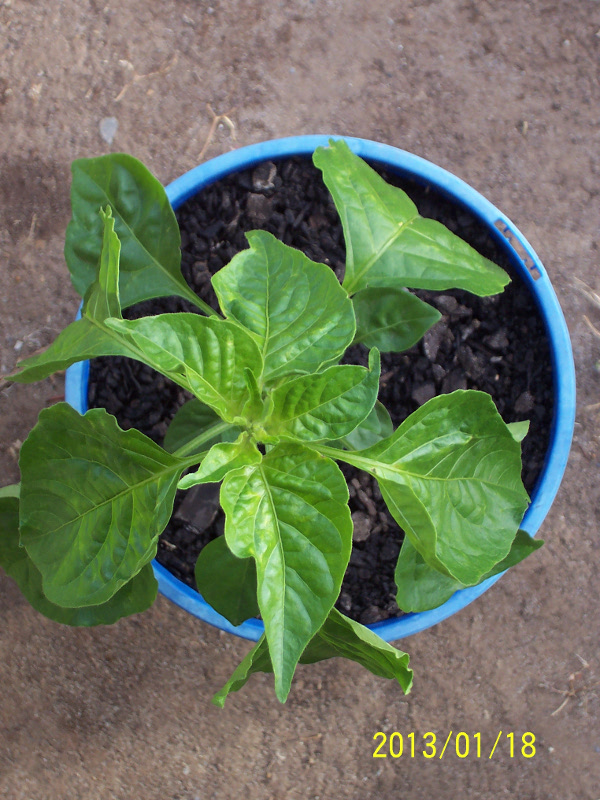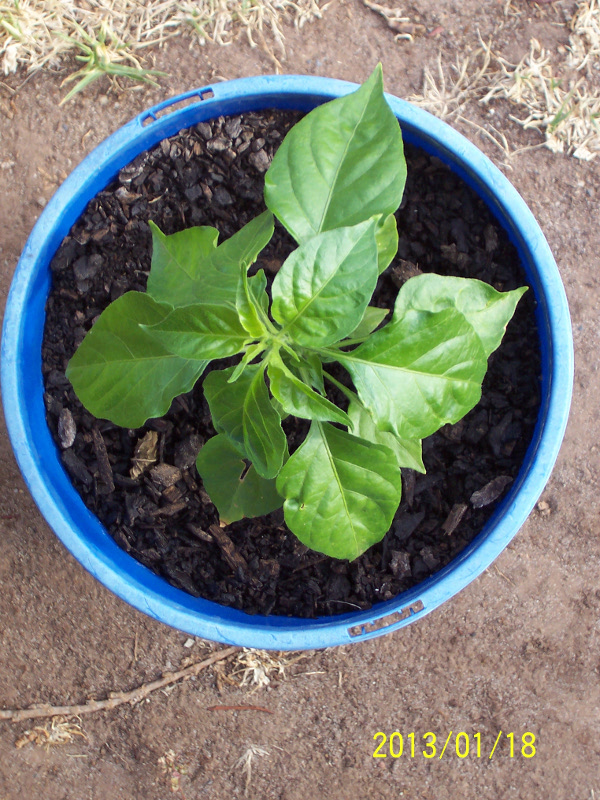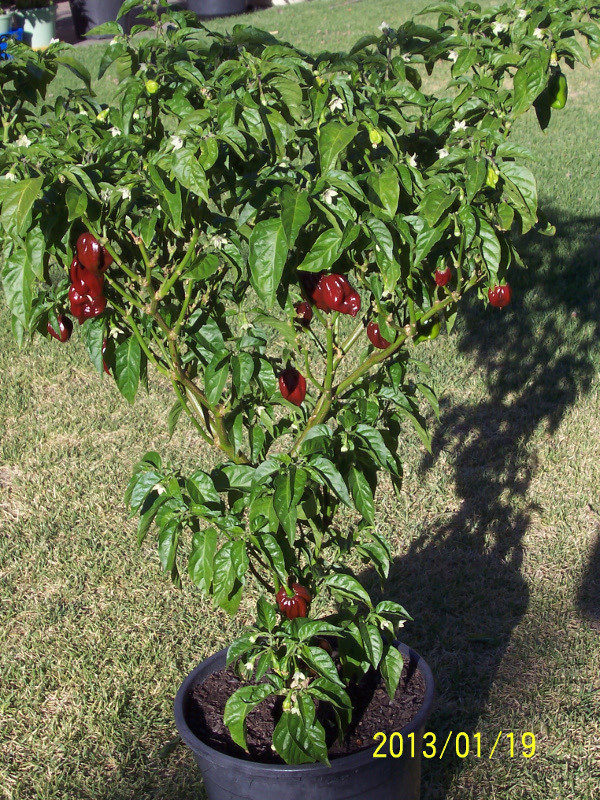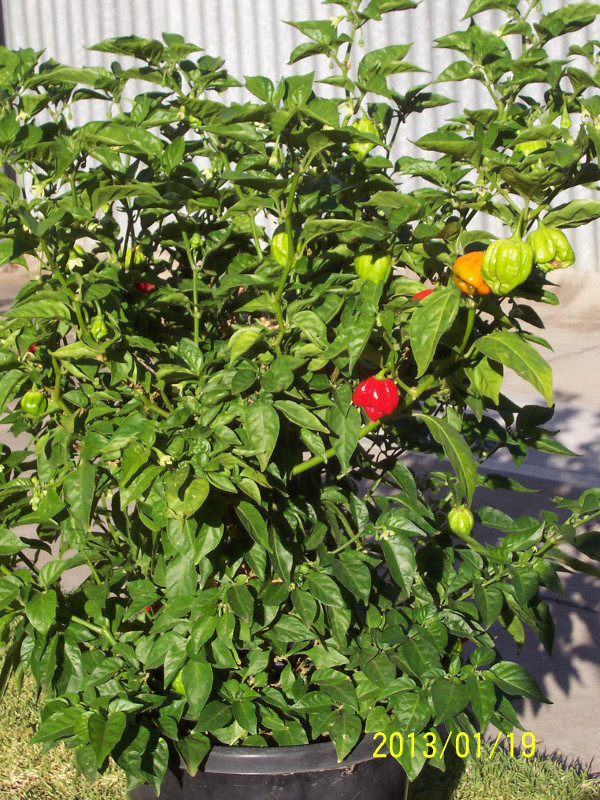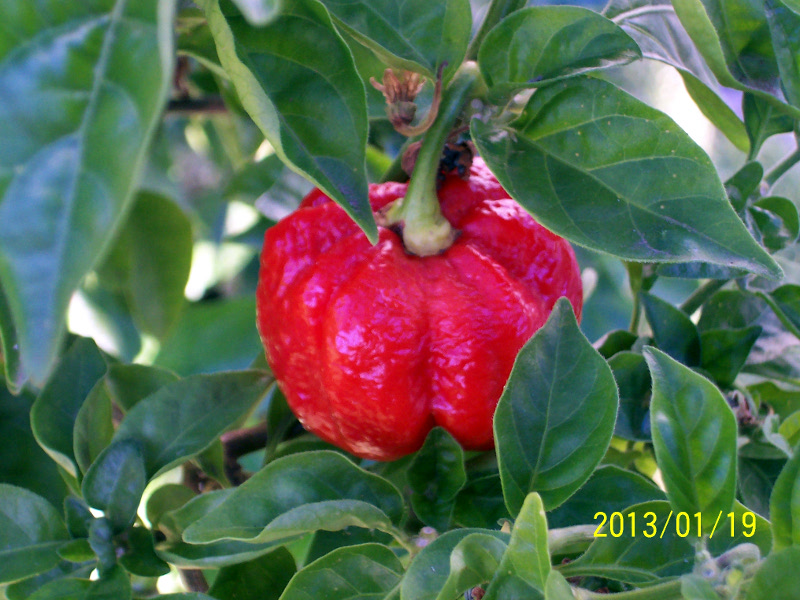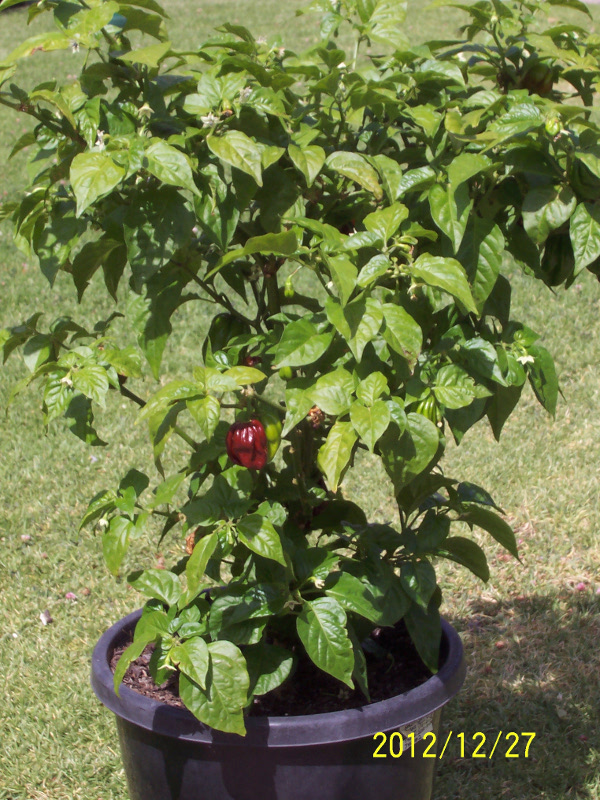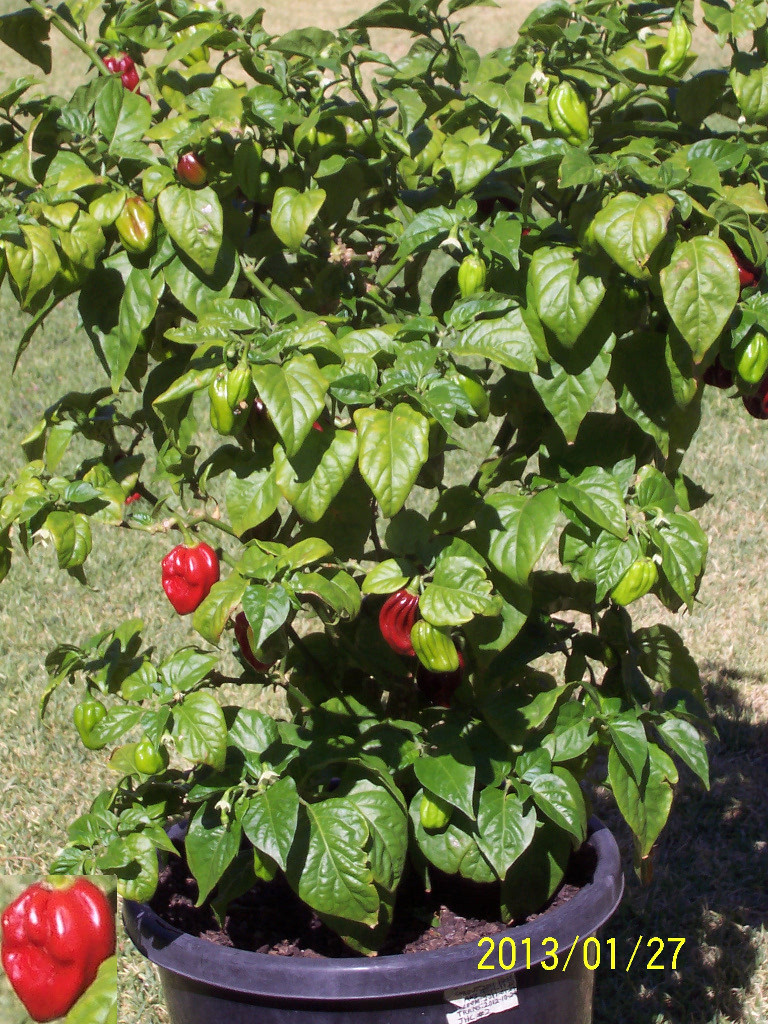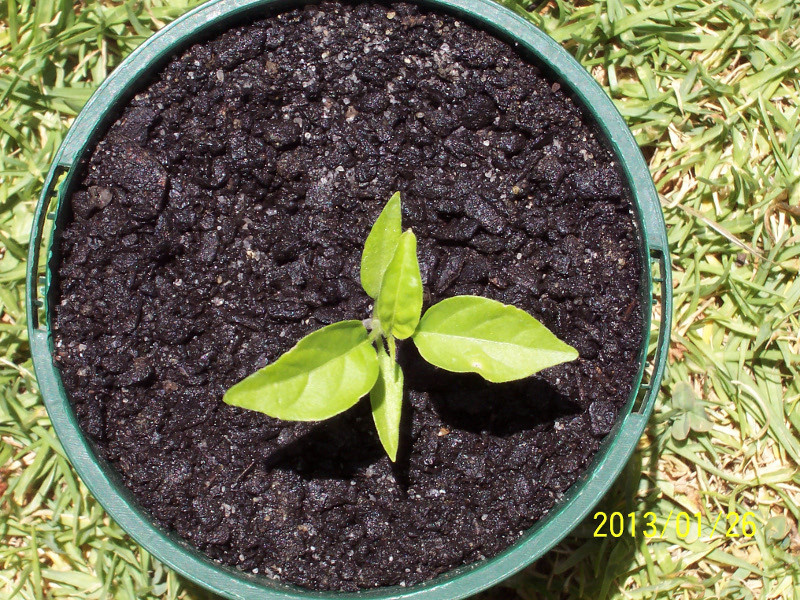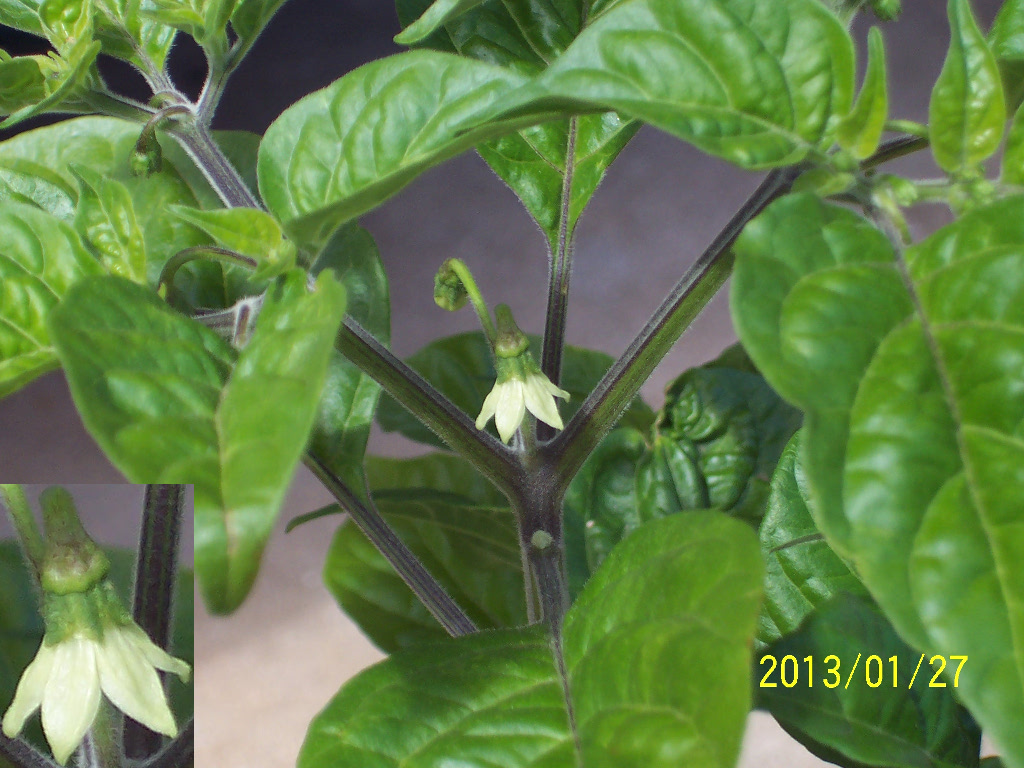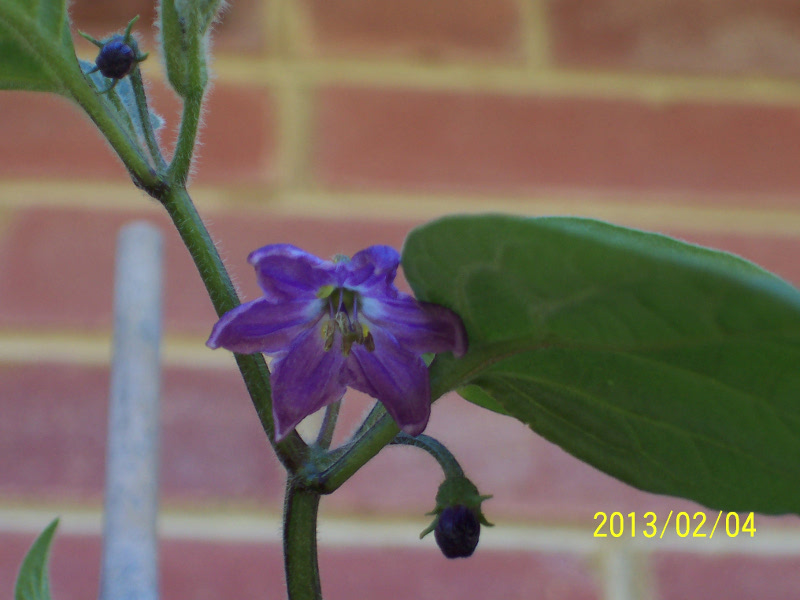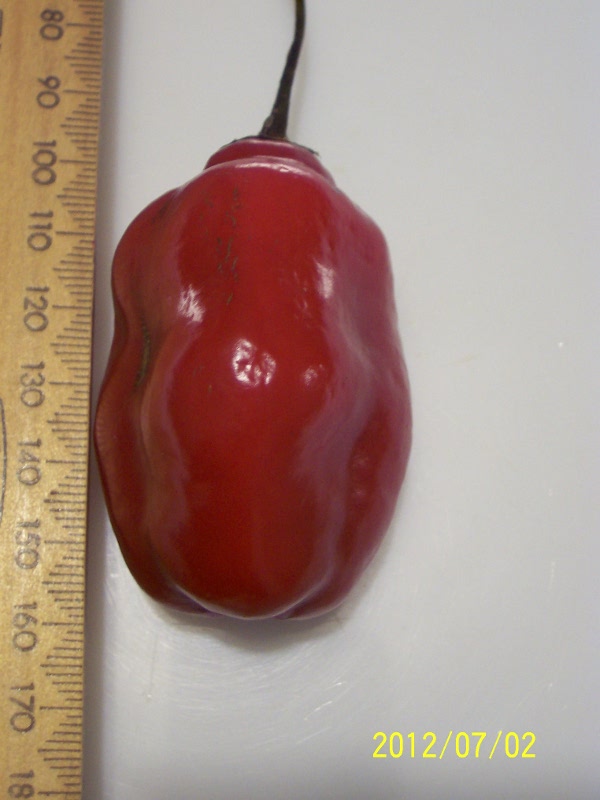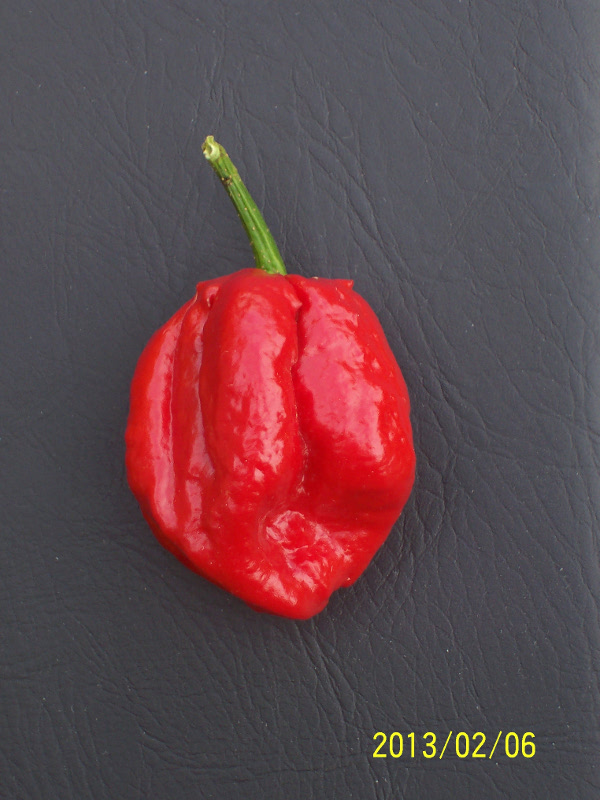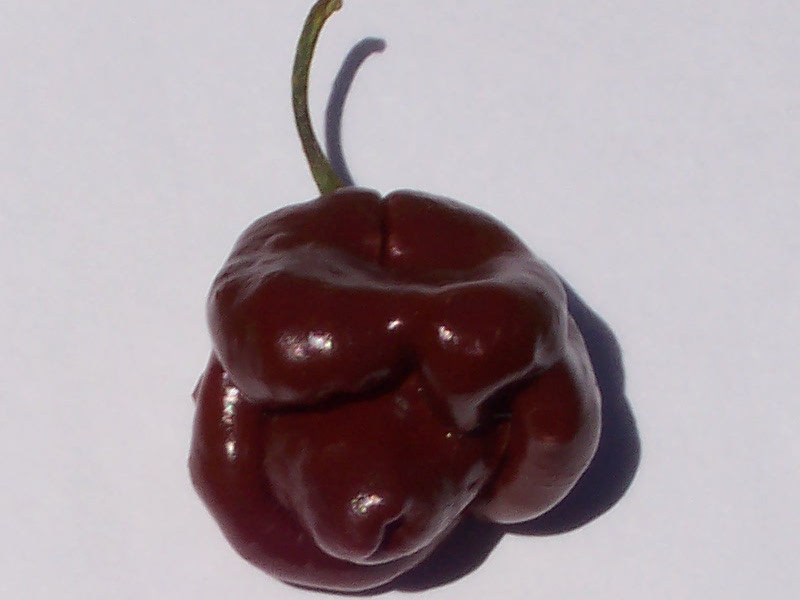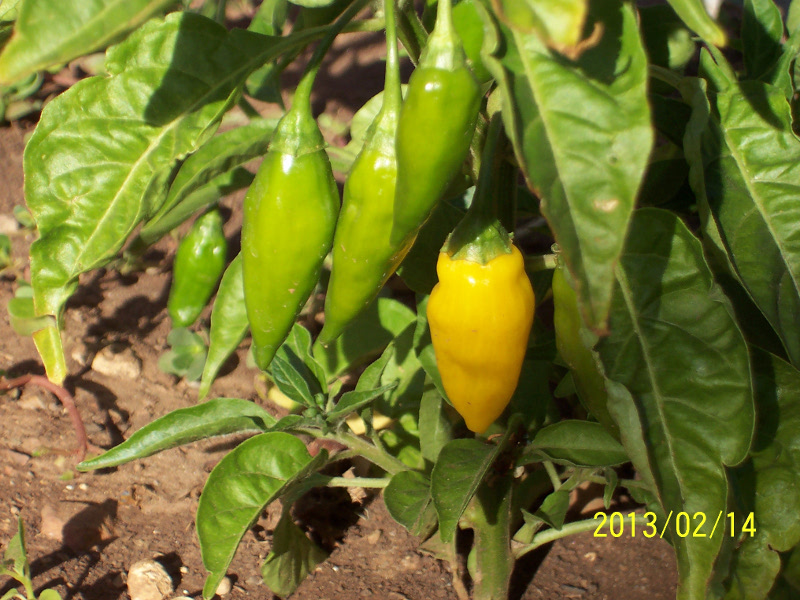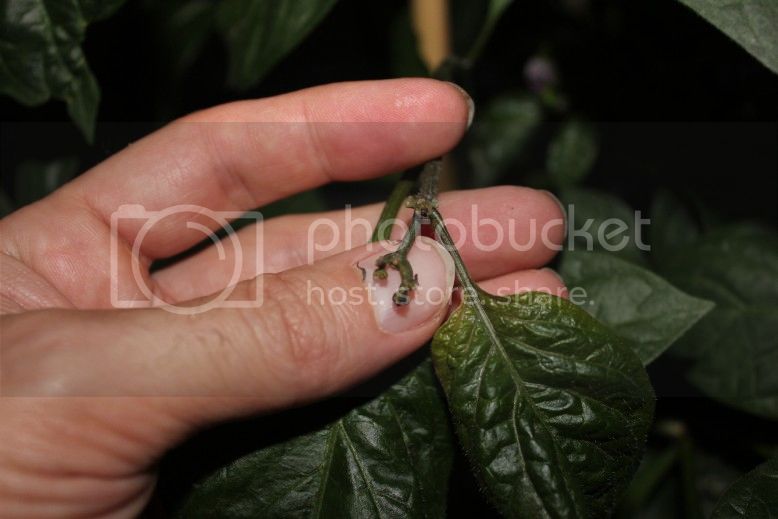With Spring officially arriving I have kicked off the season a couple of seeds from a Red Rocoto pod that found its way to me. The seeds are currently soaking in distilled water after being dipped in H2O2 solution for a few minutes.
Many of the plants from previous season remain. The vast majority of the mature non C. Pubescens plants have not regrown thus far. As of Friday I have one Not Locato (plant #2) in bloom with the other (plant #1) developing buds. Today marks the first day an orange Rocoto plant in the garden has re-entered bloom.
2012/2013 Season - Sprouted
Capsicum Baccatum:
Capsicum Annuum:
Updated 13 Nov 2012: Bonda Ma Jacques, Fatalii and Hot Lemon since been written off. Three Biquinho sprouts from 25 Nov to 27 Nov. Aji Omnicolor volunteer transplanted to failed pot. Over wintered Ebony Fire plant omission rectified.
Updated 11 Nov 2012: Rocoto Aji Largo hook sighted.
Updated 03 Oct 2012: 1st Canario sprout emerged as a hook last Saturday (Oct 27). 2nd Carmine sprout emerged on Wednesday (Oct 31) making it 2/2. 1st Sukayna sprout emerged on Thursday (Nov 01). Additions to the overwintered plants on the active list include Bhut Jolokia Chocolate, Datil, Goat's Weed, Habanero Chocolate, Jamaican Yellow, Not Habanero Peach, Not Naga Morich (maybe Bih) and Not Seven Pot.
Updated 20 Oct 2012: 7pot Yellow sprout sighted two days ago is fully upright.
Updated 15 Oct 2012: Fourth Red Rocoto hook visible a days ago is upright. Sowed 1 Fatalii and 1 Sukankya/White Flowring C. Pubescens seed. Jamaican Hot Chocolate now on the active overwintered plant list.
Updated 11 Oct 2012: Third Red Rocoto hook visible two days ago is upright. 6 Limón sprouts came up this past week; 7th decapitated. Sowed 1 Blondie, 2 Carmine and 1 Rocoto Aji Largo seed today. Trinidad Seven Pot plant now on the active list.
Updated 22 Sep 2012: First Red Rocoto sprouted today. Not Fluorescent Purple plant #2, Moruga Red plant and SB TFM plant #2 now on the active overwintered plants list.
Updated 21 Sep 2012: Aji Cristal plants now on the active overwintered plant list. Started more Red Rocoto seeds.
Updated 20 Sep 2012: Sowed 7 Limón seeds straight from a pod of a defunct plant. BGP and Beni Highlands now on the active overwintered plant list.
Updated 14 Sep 2012: Biquinho, Caribbean Red, Inca Red Drop and SB TFM plant #4 now on the active overwintered plants list.
Updated 10 Sep 2012: Sowed one Canario seed and one Sukanya/White Flowering C. Pubescens seed. Some of the over wintered C. Baccatum varieties have fresh growth.
Updated 03 Sep 2012: More Rocoto plants are active than I had first listed; Bonda Ma Jacques marks the first new C. Chinense.
Many of the plants from previous season remain. The vast majority of the mature non C. Pubescens plants have not regrown thus far. As of Friday I have one Not Locato (plant #2) in bloom with the other (plant #1) developing buds. Today marks the first day an orange Rocoto plant in the garden has re-entered bloom.
2012/2013 Season - Sprouted
Capsicum Baccatum:
- Aji Omnicolor
- Blondie
- 7pot Yellow
- Biquinho
- Carmine
- Limón
- Canario
- Rocoto Aji Largo
- Rocoto, Red
- Sukanya/White flowering
Capsicum Annuum:
- Ebony Fire
- Goat's Weed
- Jamaican Yellow
- Not Fluorescent Purple
- Aji Amarillo
- Aji Cristal
- Aji Omnicolor
- Brazilian Starfish
- Inca Red Drop
- Bahamian Goat Pepper
- Beni Highlands
- Bhut Jolokia Chocolate
- Biquinho
- Caribbean Red
- Habanero Chocolate
- Habanero Orange
- Jamaican Hot Chocolate
- Moruga Red
- Not Habanero Peach
- Not Seven Pot Not Red
- Scotch Bonnet TFM (#1; Clone of #1; #2; #3; #4; #5)
- Trinidad Scorpion (#1 - Rescued; #2)
- Trinidad Seven Pot
- Manzana, Orange
- Not Locato (#1)
- Not Locato (#2)
- Not Locato (#2 Gen. 2 ) x 4
- Rocoto, Orange (#1 - Big Pot; #2 - Pot; #3 - Pot; #5 - Ground; #6 - Ground)
Updated 13 Nov 2012: Bonda Ma Jacques, Fatalii and Hot Lemon since been written off. Three Biquinho sprouts from 25 Nov to 27 Nov. Aji Omnicolor volunteer transplanted to failed pot. Over wintered Ebony Fire plant omission rectified.
Updated 11 Nov 2012: Rocoto Aji Largo hook sighted.
Updated 03 Oct 2012: 1st Canario sprout emerged as a hook last Saturday (Oct 27). 2nd Carmine sprout emerged on Wednesday (Oct 31) making it 2/2. 1st Sukayna sprout emerged on Thursday (Nov 01). Additions to the overwintered plants on the active list include Bhut Jolokia Chocolate, Datil, Goat's Weed, Habanero Chocolate, Jamaican Yellow, Not Habanero Peach, Not Naga Morich (maybe Bih) and Not Seven Pot.
Updated 20 Oct 2012: 7pot Yellow sprout sighted two days ago is fully upright.
Updated 15 Oct 2012: Fourth Red Rocoto hook visible a days ago is upright. Sowed 1 Fatalii and 1 Sukankya/White Flowring C. Pubescens seed. Jamaican Hot Chocolate now on the active overwintered plant list.
Updated 11 Oct 2012: Third Red Rocoto hook visible two days ago is upright. 6 Limón sprouts came up this past week; 7th decapitated. Sowed 1 Blondie, 2 Carmine and 1 Rocoto Aji Largo seed today. Trinidad Seven Pot plant now on the active list.
Updated 22 Sep 2012: First Red Rocoto sprouted today. Not Fluorescent Purple plant #2, Moruga Red plant and SB TFM plant #2 now on the active overwintered plants list.
Updated 21 Sep 2012: Aji Cristal plants now on the active overwintered plant list. Started more Red Rocoto seeds.
Updated 20 Sep 2012: Sowed 7 Limón seeds straight from a pod of a defunct plant. BGP and Beni Highlands now on the active overwintered plant list.
Updated 14 Sep 2012: Biquinho, Caribbean Red, Inca Red Drop and SB TFM plant #4 now on the active overwintered plants list.
Updated 10 Sep 2012: Sowed one Canario seed and one Sukanya/White Flowering C. Pubescens seed. Some of the over wintered C. Baccatum varieties have fresh growth.
Updated 03 Sep 2012: More Rocoto plants are active than I had first listed; Bonda Ma Jacques marks the first new C. Chinense.

